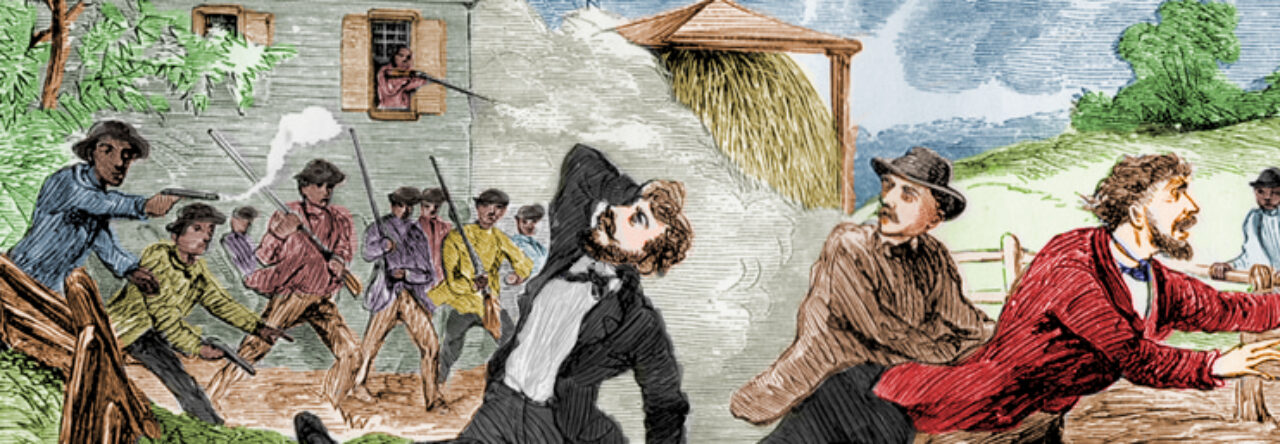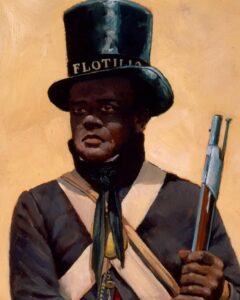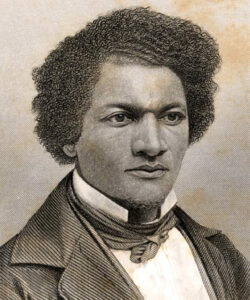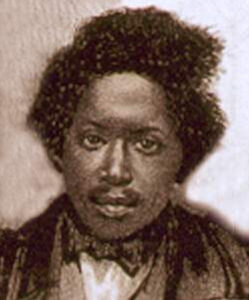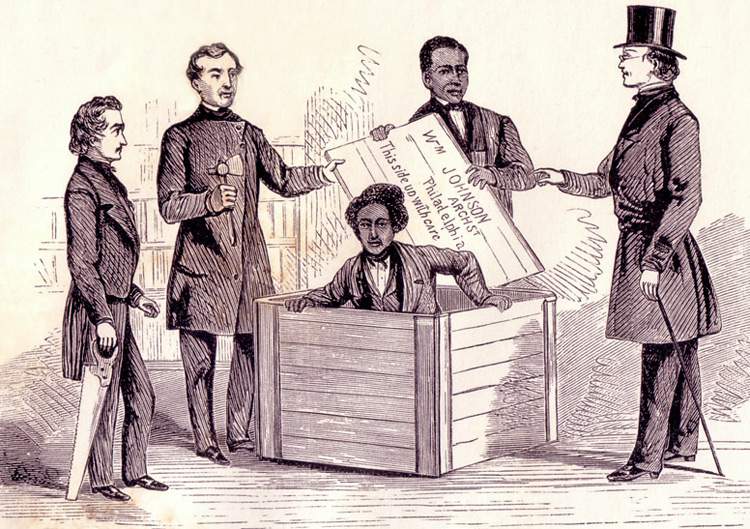Frederick Douglass escapes from slavery in Baltimore to become a leading antislavery writer, orator, and arguably the most famous Black man in the United States
Date(s): escaped 1838
Location(s): Eastern Shore, Maryland; Baltimore, Maryland; New York, New York; New Bedford, Massachusetts
Outcome: Freedom
Summary:
Frederick Bailey’s (later Douglass) enslaver allowed him to hire his time out in Baltimore. That meant Douglass could find his own work, but had to hand over his wages to enslaver Hugh Auld. Douglass did not relish handing over most or all of his hard-earned pay, but hiring out had its advantages. Mainly, it afforded enslaved people like Douglass opportunities to make connections with free African Americans, and even plot their escapes. After Douglass had had a dispute with Auld over the arrangement, Douglass did exactly that. Many enslaved people borrowed free papers from free African American allies, but Douglass did not fit any of his free friends’ physical descriptions. Instead, Douglass borrowed his friend’s sailors’ protection papers, even though the physical description was not a perfect match to Douglass’s appearance. He also had help from a free Black woman, Anna Murray, whom Douglass would later marry. Douglass escaped by train and sought to minimize the amount of times the sailor’s protection document was closely examined. A train conductor briefly scanned the false document, but did not notice that the physical description did not match Douglass. When Douglass arrived in New York City in early September, he met David Ruggles, the Black abolitionist who spearheaded the city’s vigilance committee. Ruggles advised him not to stay in New York and encouraged him to travel to New Bedford, Massachusetts. There, Douglass took work as a physical laborer, became a regular reader of the antislavery newspaper The Liberator, and a fixture at antislavery gatherings. In New Bedford, Douglass formally changed his name from Frederick Bailey to Frederick Douglass. As Douglass, the freedom seeker went on to publish his Narrative (1845), the first of three autobiographies, become one of the most famous orators in the country, and arguably the most famous freedom seeker in American history.
Related Sources
Related Essays
